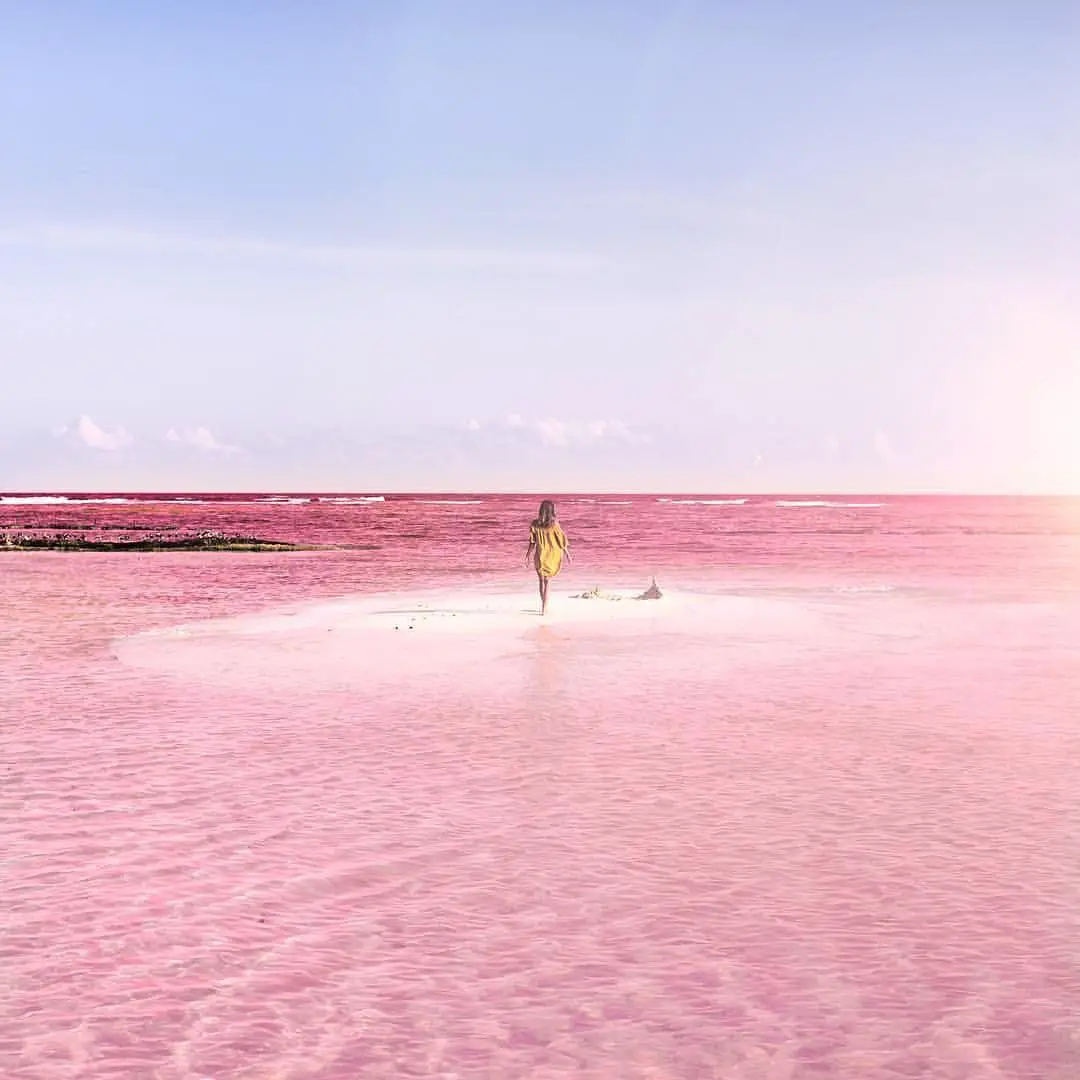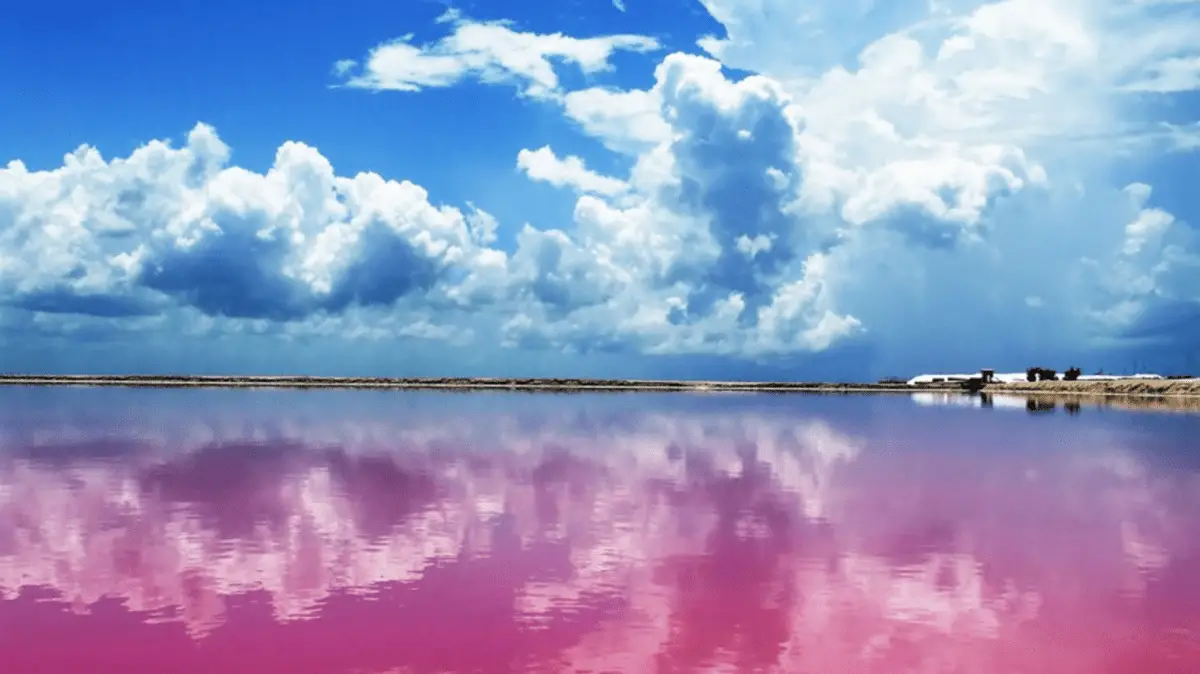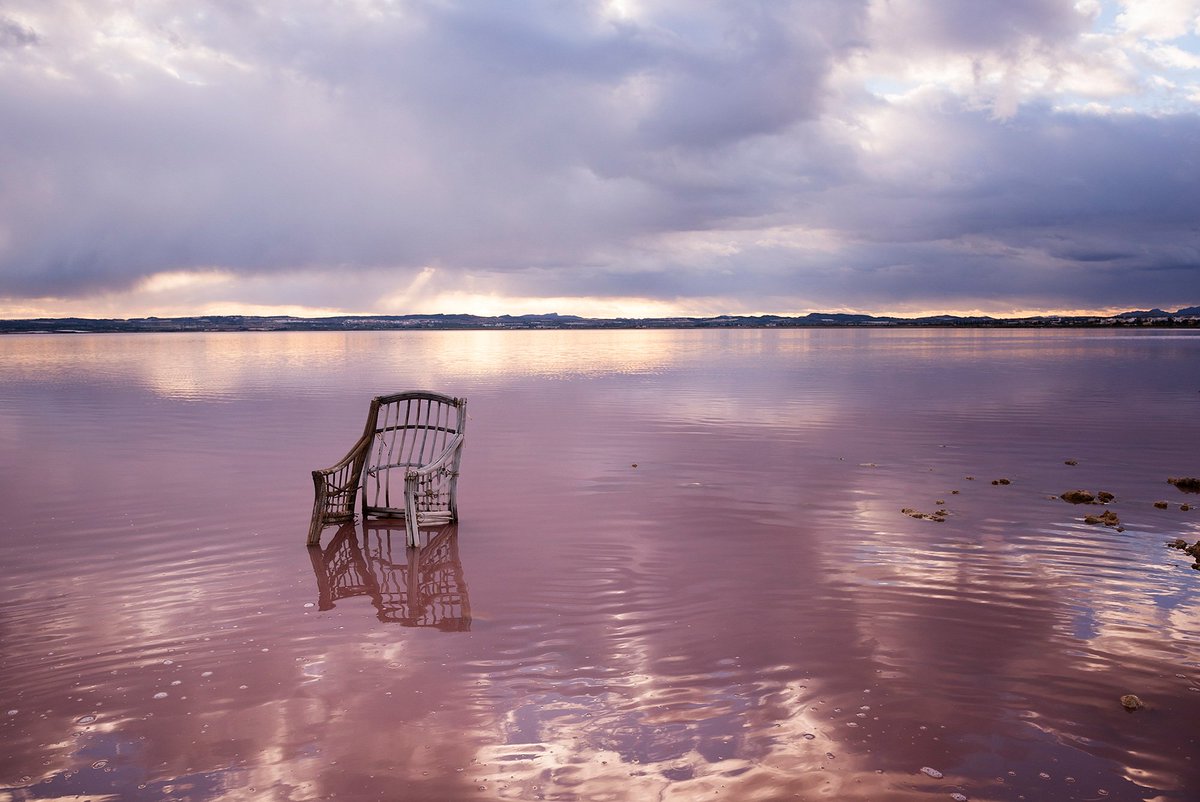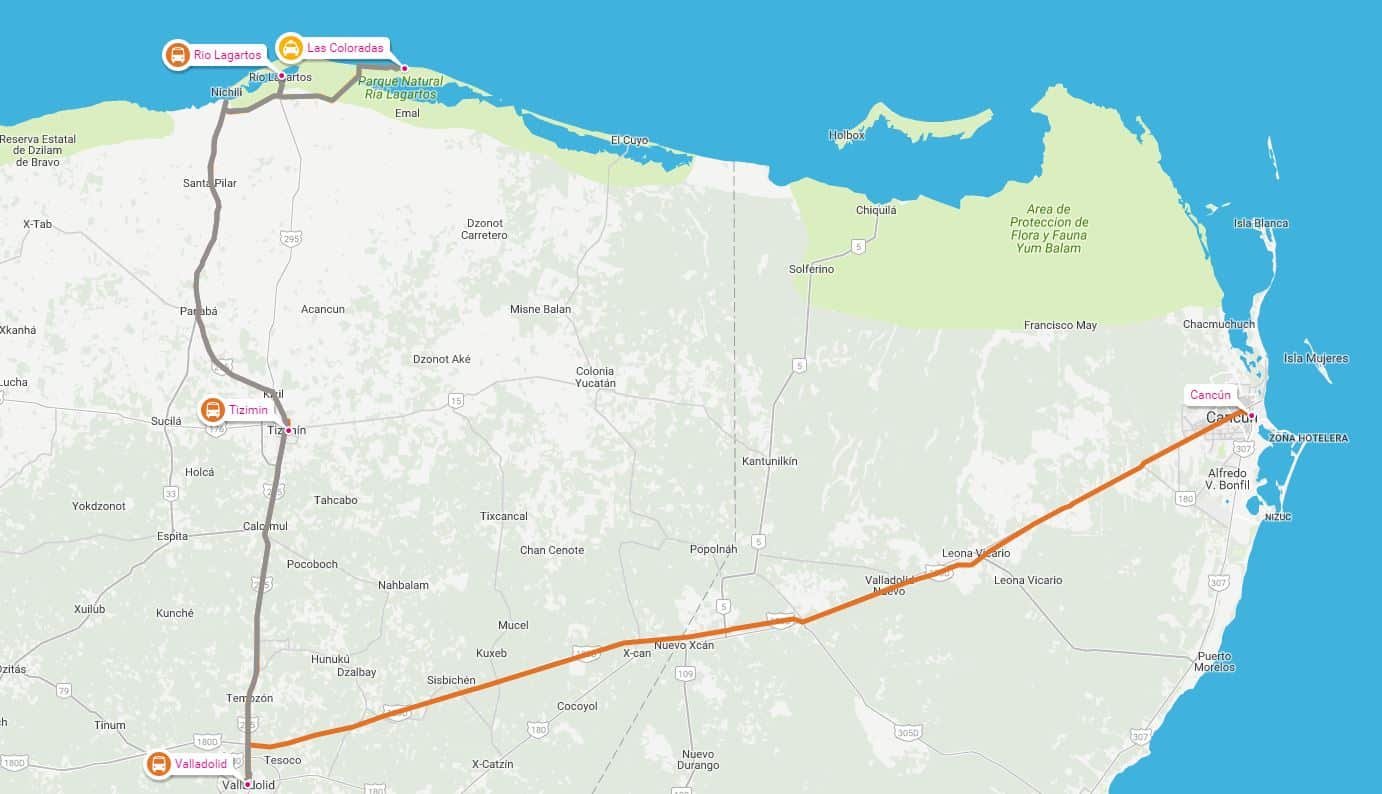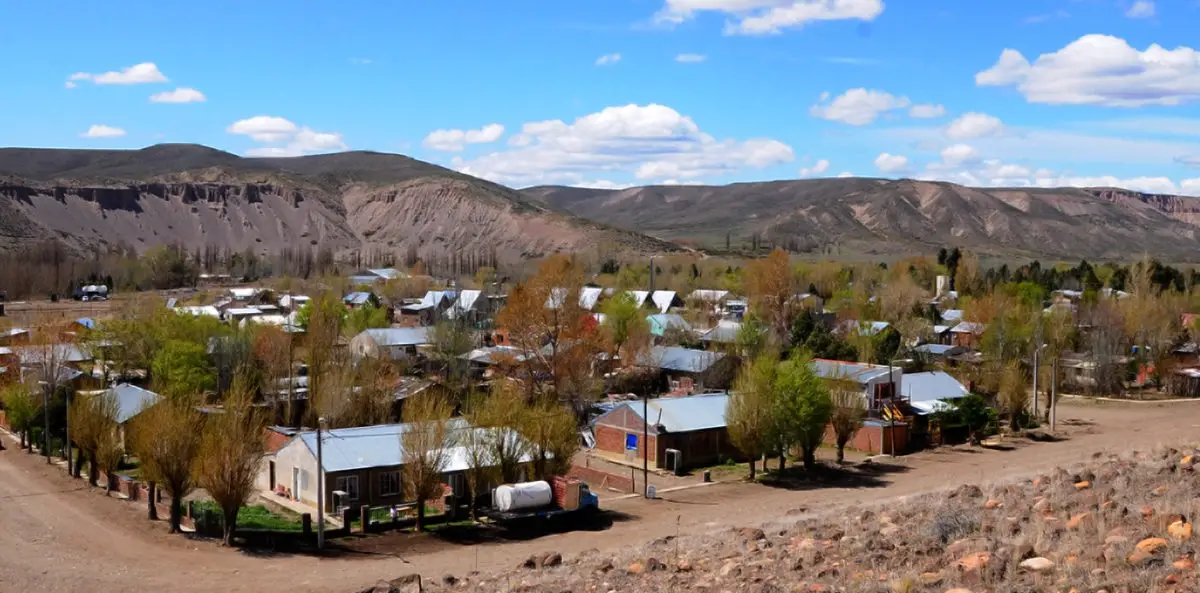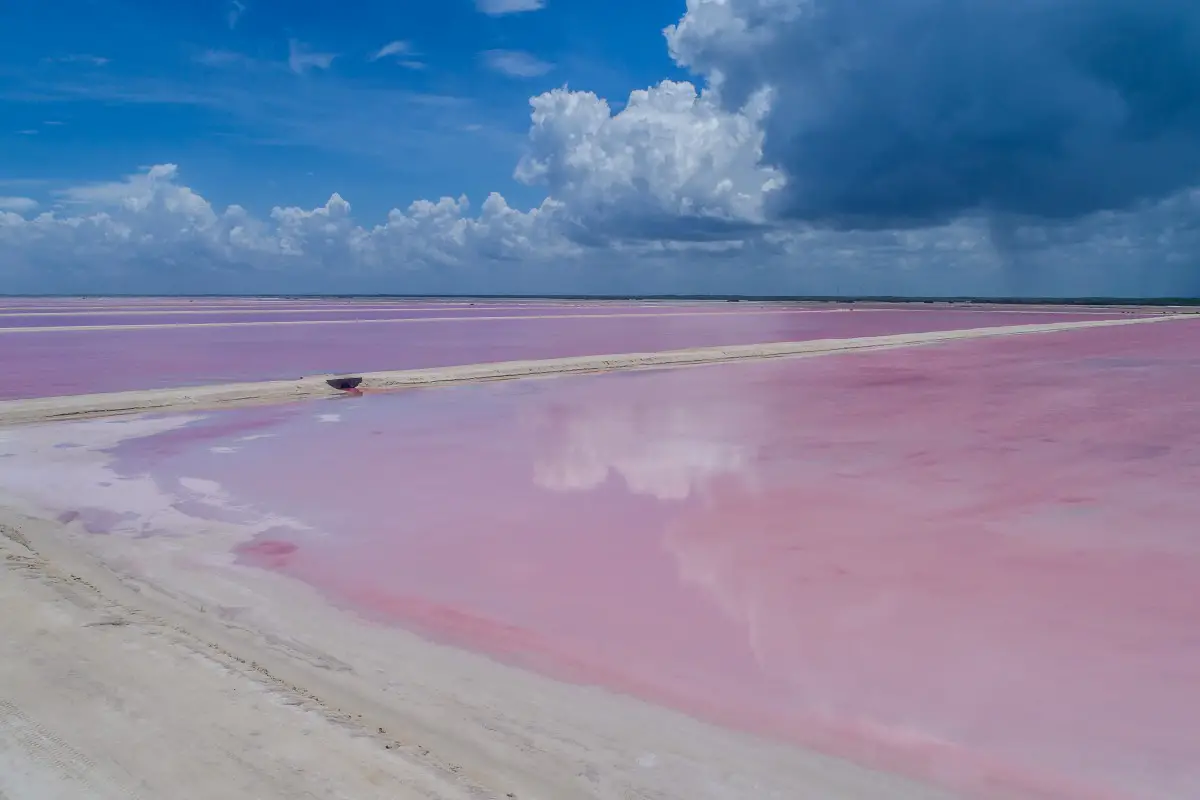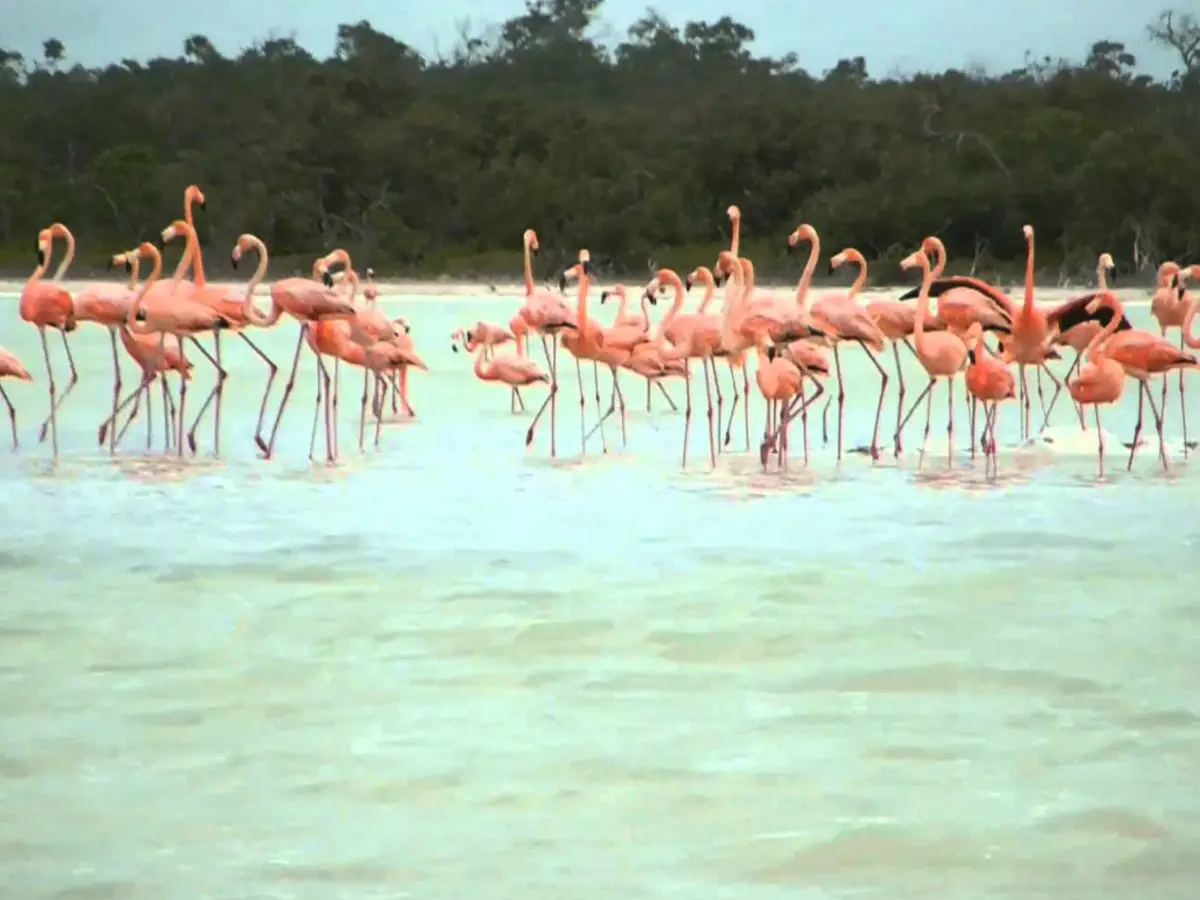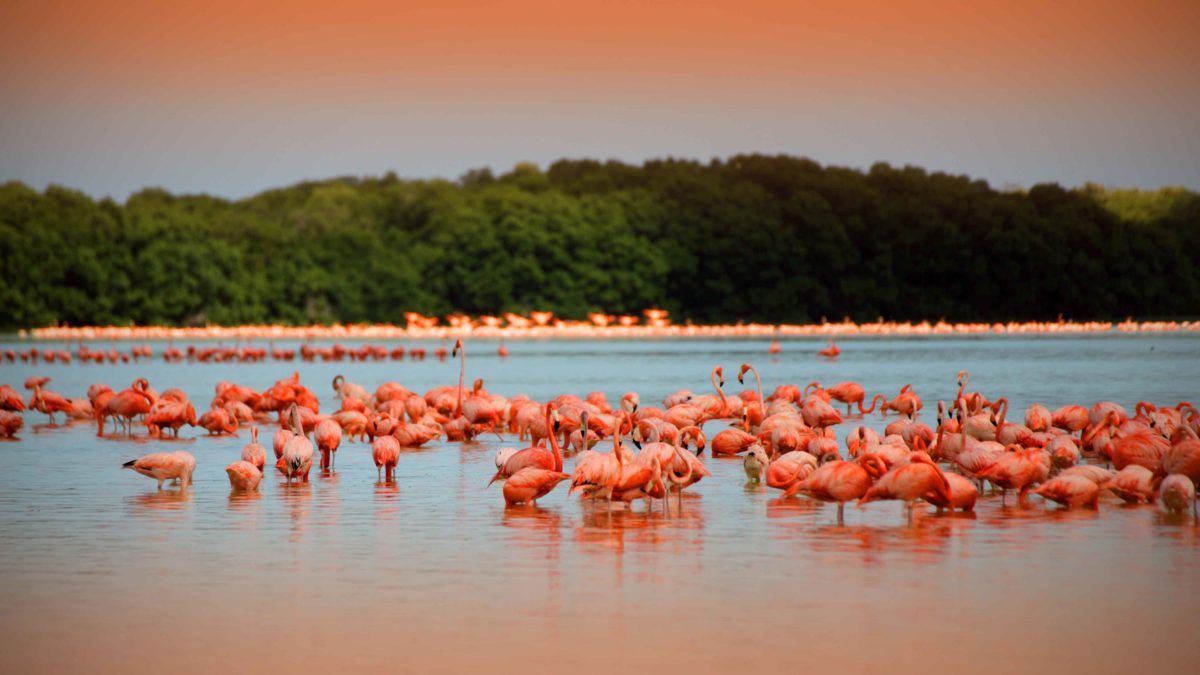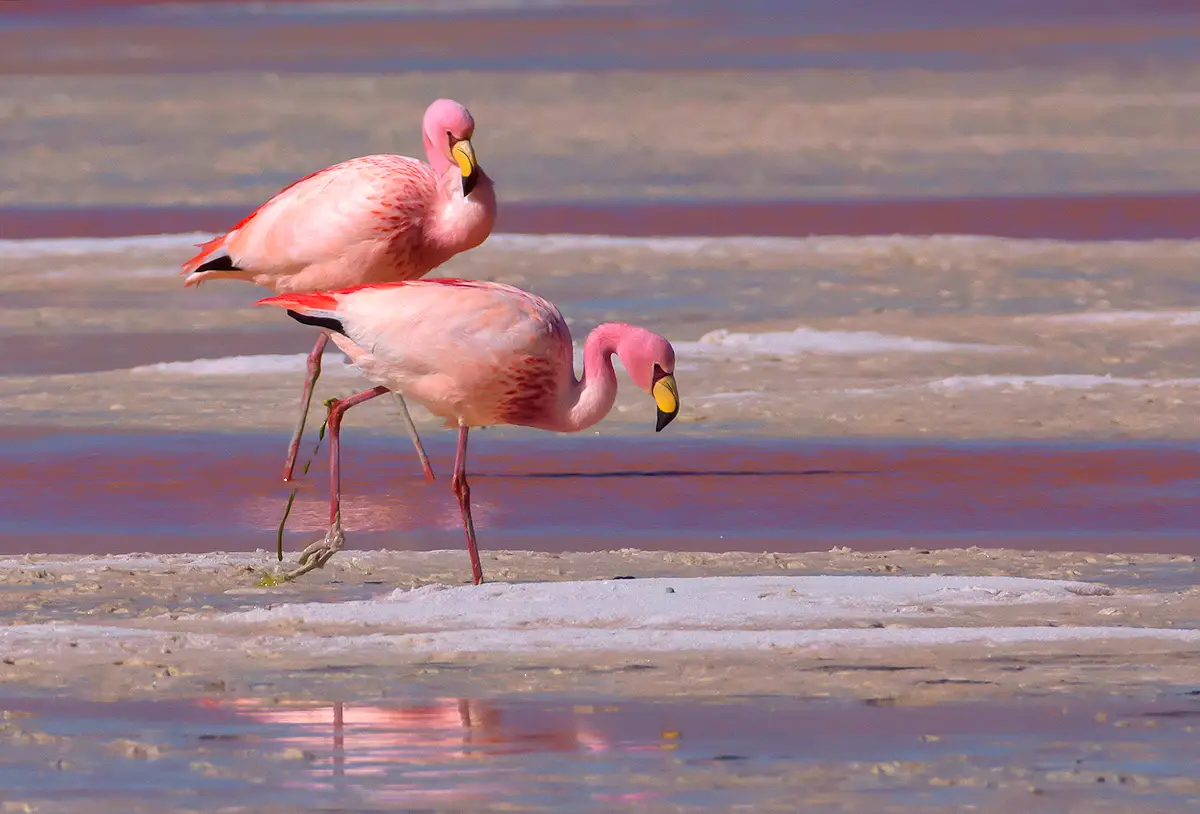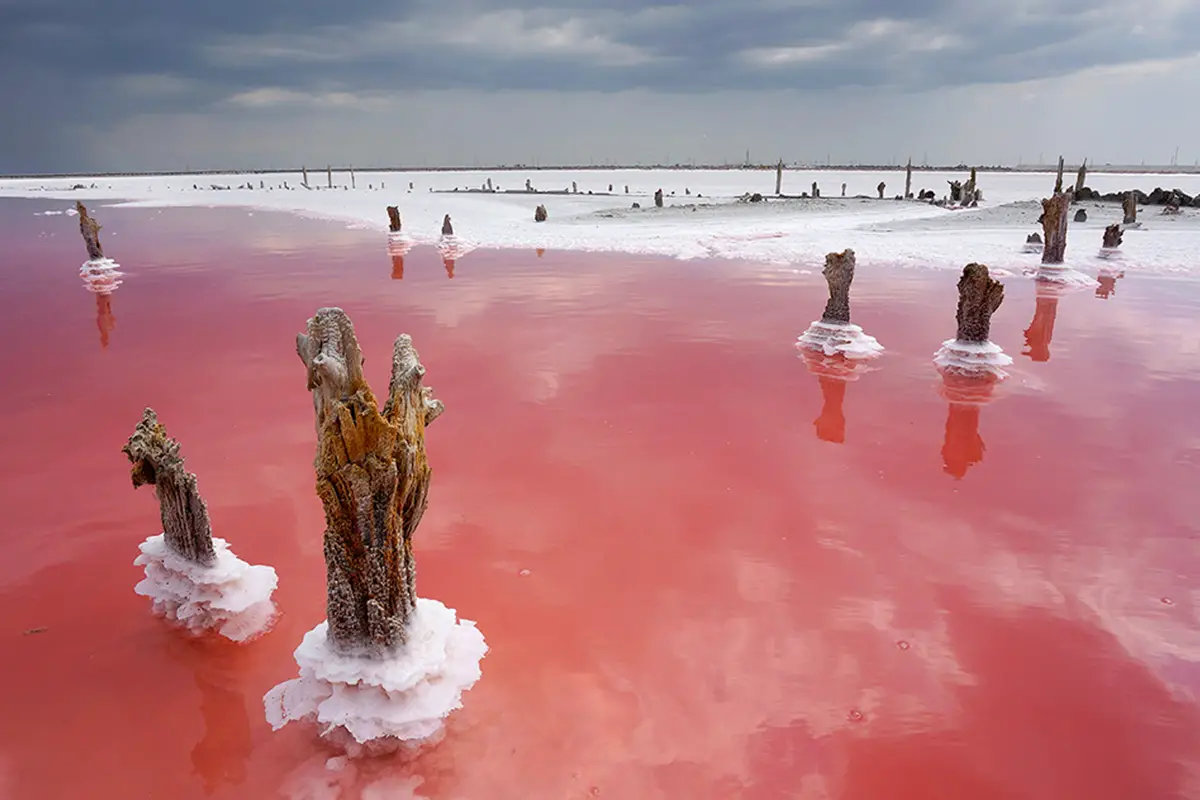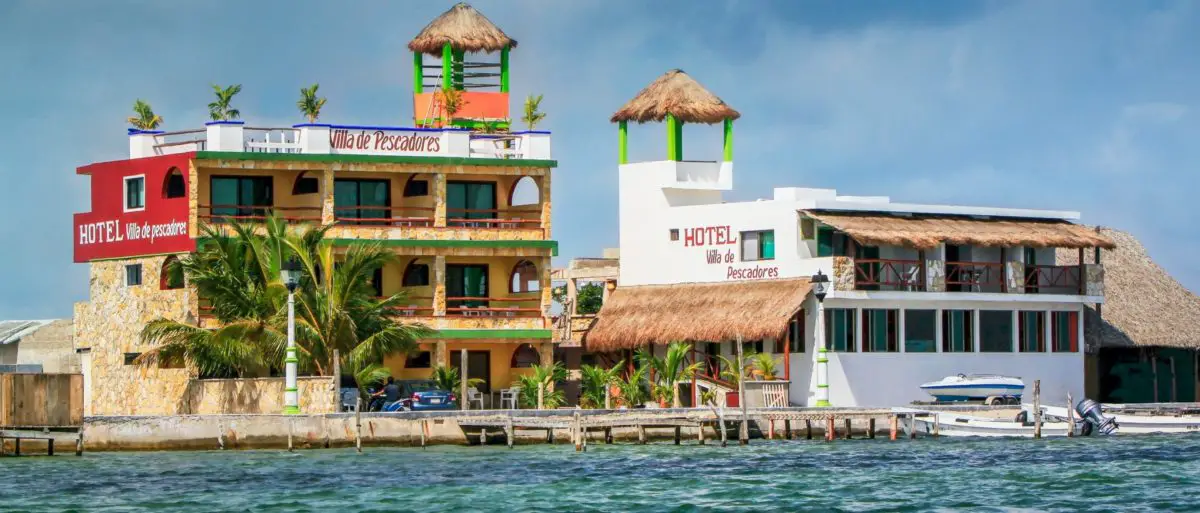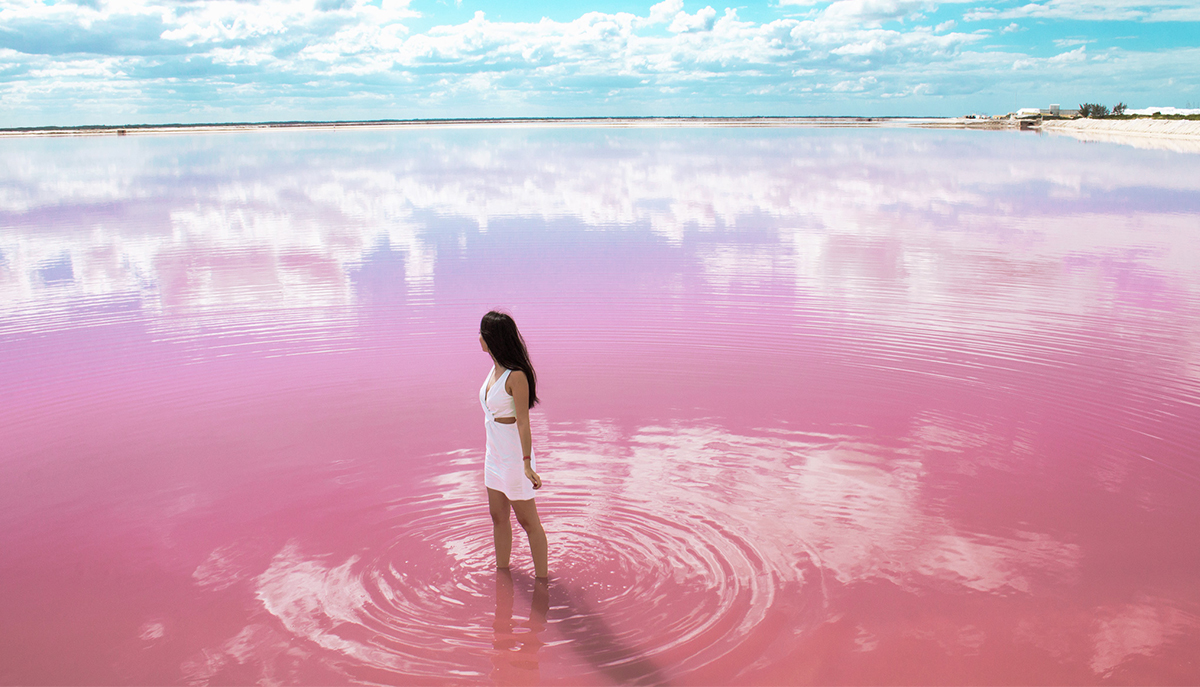The Pink Lagoon is an incredible body of water that appears majestic in the state of Yucatan, in the Mexican territory; so much so that when you observe it, it seems to have been deliberately coloured, as if it were a landscape painting; sometimes with a barely visible pink colour, but at other times so intense that it seems unreal, it is impressive. We invite you to discover this natural wonder, its characteristics, its climate and its landscapes.
Indice De Contenido
Introduction
On this occasion we have the opportunity to share with all our readers an impressive natural creation, whose images seem to be part of an unreal landscape, created at the whim of a landscape painter; this is Laguna Rosa, which rises majestically in the state of Yucatan in Mexico.
It is a paradise made up of mangroves and a multitude of reddish birds, where the water is so calm that it is possible to swim without wanting to, because it is not just a lagoon, but a saline area.
It is a beautiful place, known as Las Coloradas because of the colour of its waters, very close to the town of the same name, and where the inhabitants have dedicated their economy to the extraction of salt.
Without further ado, we invite you to get to know the Pink Lagoon, an area that belongs to the Rio Lagartos Biosphere Reserve, and we warn you that you will be amazed, especially when you discover that its tones are brown or greenish at first, but in July, August and even March it presents this magical tonality of pink water.
History
Salt has been extracted from the Laguna Rosa in the village of Las Coloradas for more than a hundred years, since the time of the Mayas, who traded it between all their villages. Today it is still done, but on a larger scale, as it has been industrialised thanks to the Roche family, who began extracting around 5,000 tonnes of salt a year in 1940.
Today, production levels are higher, thanks to the latest technology and equipment within the Roche Industrial Group, which now produces 750 million tonnes of salt per year, as well as many other related food products.
Most of this production is used to meet the needs of the domestic market, making it one of the most important producers in Mexico and the country’s main source of salt. Despite all this, Laguna Rosa is a place that has to be seen to be believed.
And although it is neither advisable nor healthy to bathe in its waters, it is a very interesting place to visit, and while visiting this natural corner you can take the opportunity to visit the nearby fishing villages of Rio Lagartos or San Felipe, with plenty of opportunities for activities and impressive photographic opportunities.
Location of Laguna Rosa
Laguna Rosa is located in Las Coloradas, in the state of Yucatan, whose capital is the city of Mérida, in the territory of Mexico, a country located in the southern part of North America, whose capital is Mexico City.
This lagoon is located in a small fishing village of around 1,000 inhabitants, also known as Las Coloradas, in the municipality of Río Lagartos in the same state.
As a curious fact, we tell you that in Spain there is a body of water called Laguna Rosa de Torrevieja, considered a unique natural phenomenon, in which it is forbidden to bathe, but which is a natural spectacle.
In the following picture you can see this Laguna Rosa de Torrevieja in Spain and the impressive resemblance of these waters to those of the Yucatan.
This interesting lagoon, similar to the one we are going to visit during our tour, is located in the region of Vega Baja de Segura in Alicante, and its 1,200 hectares form part of the Natural Park of the Lagunas de Mata and Torrevieja. However, the Laguna Colorada is also located in Bolivia, which is why the exact location of this particular Mexican body of water is often confused.
For those who wish to reach this beautiful lagoon, better known as Laguna de Las Coloradas in Rio Lagartos, there are two alternative routes from the city of Merida in Mexico: the first starts from the Merida-Motul motorway and reaches the municipality of Tizimi, from where you can head towards Rio Lagartos, when you reach a junction you will see a sign indicating the way to the lagoon, which can be seen from this point in just thirty minutes.
The other alternative from the city of Merida is to take the road to Valladolid, which is also good for those who are in Cancun. Then take the road to Tizimín and continue to Río Lagartos until you get to the aforementioned junction, from where you are only a few minutes away from enjoying the incomparable views of the Pink Lagoon.
Las Coloradas (Yucatan)
Las Coloradas is the name of the port on the northern coast of the Yucatan Peninsula, belonging to the municipality of Rio Lagartos, one of the 106 in the state of Yucatan.
It is also, as mentioned, one of the names of the Laguna Rosa, where the people of Las Coloradas work in fishing and the salt industry, which is very important to them.
By way of general information, it is worth noting that the common salt we use to season our food can come from sea salt, as is the case with the salt produced in Las Coloradas, which is obtained by evaporation of its water content.
The following picture shows the typical village of Las Coloradas, home to many fishermen who work on the shores of Laguna Rosa.
Las Coloradas is the town where the Laguna Rosa is located, which looks like a candyfloss from the heights, and since it is only two hours away from the capital of the state of Yucatan, it is often visited by tourists who want to personally experience this incredible wonder and take pictures to prove its existence, even though it does not have any hotels or luxury resorts.
It is also a very stable commercial centre in the state of Yucatan, due to the constant production and distribution of salt, as it has one of the largest salt mines in Mexico, as well as high level machinery, located in a plant known as Industria Salinera Yucatan SA de CV.
Features of the Pink Lagoon
The Pink Lagoon is a natural phenomenon that seems to have come out of a fairy tale, with a series of characteristics that identify it as a salty body of water that sometimes changes colour, which is an important aspect of it. It is also worth knowing each of the following elements that characterise it:
- Laguna Rosa is located in the village of Las Coloradas, in the Rio Lagartos region of the state of Yucatan, Mexico, a place that is only one metre above sea level and has a low population density, made up mainly of fishermen.
- It is part of the Rio Lagartos Biosphere Reserve, a few hours from Merida and Cancun.
- This lagoon is a natural reservoir of water with a high concentration of salt and a series of micro-organisms responsible for its pink colour. In this sense, it has been established that the colour is due to the membranes of the halobacteria present, which are both purple and reddish.
- It is not forbidden to swim in the waters of this pink lagoon, but it is not recommended and even less advisable to stay in it for a long time, as it could cause skin irritation, especially if you use sunscreen or insect repellent, and on the other hand it could be a polluting factor in the production of salt.
- Its beaches are sandy, open to the sea, not very long and not very steep.
The climate
The Pink Lagoon has a tropical climate, with the peculiarity that it rains less in winter than in summer; the average annual temperature is around 25.3°C, with an average annual rainfall of 668 mm.
The wettest month is September, while April has the least rainfall. On the other hand, January is considered the coldest month of the year, reaching 22.1°C, while the month of July can reach temperatures of 27.6°C, making it the warmest month of the year.
The best time to visit the lagoon is between March and August, as these are the warmest and sunniest months, especially during the midday hours, and you will also have the chance to see the flamingos.
Flora and fauna
In this Pink Lagoon there is vegetation typical of coastal dunes and a series of mangroves that make up its impressive ecosystem. The same is favoured by the presence of its salty waters and those coming from the laminar drainage of the mantle of the Yucatan Peninsula, which join the Gulf of Mexico in the Caribbean Sea.
The vegetation consists mainly of coastal dunes with creeping herbaceous species, shrubs and bushes that are low and tolerant of salinity. These include species such as the spring, beach creeper, sea purslane and sea grape. There is also a wide variety of coconut palms, chit palms and guano palms, among others.
The waters are also home to the characteristic Dunaliella Salina seaweed, which is the main food source for the small crustaceans that flamingos love to eat.
These magnificent birds acquire a striking pink colour from their diet, otherwise their feathers would appear pale.
This can be seen in the chicks of this species, which are born with white feathers and turn pink when they reach adulthood.
Its beaches are unspoilt, with a wide variety of representative flora, such as mangroves, and fauna, such as pelicans, seagulls, turtles, sea birds and, above all, flamingos, slender birds with long legs and necks adapted to foraging in the mud.
Water Fountains
This magical place is part of the Rio Lagartos Natural Park, located between the states of Yucatan and Quintana Roo. Naturally, it dazzles the eye, because when we think of a body of water, be it a lagoon or the sea, we usually imagine a great mass of blue; but in this case it is not so, as it is possible to observe pink water that seems to have been deliberately coloured.
This is due to several factors, such as the high salinity of the water and the presence of Dunaliella Salina algae, which produce a large amount of reddish carotenoids.
The presence of salt plays an important role here, as it allows the life of these algae to develop, and the combination of these two elements, together with the energy and heat provided by the sun, transforms the waters of Laguna Rosa into an amazing spectacle of very characteristic shades of pink.
It should also be noted that the pink colour of its waters is not always the same or uniform, as it varies in each section, presenting a great variety of shades of blue, green, pink and red, all of which make up a beautiful and unusual mosaic.
Among the characteristics of the water of the Pink Lagoon, the sun is responsible for the intensity of its colours, as it evaporates the water and solidifies the salt, creating crystals. This gives the lagoon a very beautiful aspect, as the tones of the algae are intensified by the whiteness of the sea crystals.
As already mentioned, it is not advisable to swim in these waters, especially to avoid skin problems due to the high salt content, which can cause irritation, while on the other hand it is covered with salt crystals, which can cause injuries because they are sharp or slippery.
Tourism in the Pink Lagoon
The water of the Pink Lagoon changes colour according to the intensity of the sunlight and it is a place where many tourists go to appreciate this natural phenomenon and take incredible pictures.
Situated between green mangroves, white sand and the turquoise waters of the Caribbean, the Pink Lagoon is a spectacle worthy of a postcard.
We also recommend a visit to the town of Las Coloradas, where you can sample its seafood and grilled fish specialities. However, it should be said that the Rio Lagartos region is still not very developed, so it is necessary to have cash as there is no bank.
There are a few hotels and places to stay where tourists can go on excursions to get to know the whole region of the Laguna Rosa, its waters and its flamingos. It is worth noting that there are signs around the beaches warning that it is forbidden to enter the water, as it is highly saline.
We know that many people come to this place with the aim of getting to know it and to get the best souvenir of their visit, they go into its waters to take pictures, but this is something that is recommended to avoid because, as we have already mentioned, the excessive presence of salt can cause problems in the skin of people.
Nevertheless, it is worth it to enjoy these beautiful views, to feel the salty air and to be in a place that is different from all those known before, because it shows that the magic of nature has no limits and should be appreciated without causing any kind of alteration, in order to preserve it and so that all future generations can know it in the same way.
It is worth mentioning that Mexico is not the only country where this type of natural phenomenon occurs: Australia, Canada, Bolivia, Senegal and Spain; it would be ideal to know them all, but this depends on each person’s possibilities.
To conclude our tour of the waters of Laguna Rosa, we leave you with a few tips to help you prepare for your next visit:
- It is advisable to come prepared with water and food, as the Laguna Rosa is remote and if you are hungry or thirsty there is no place to buy food.
- Do not litter, any rubbish produced during your visit should be stored properly so that it can be disposed of later in a rubbish bin. Remember that it is important to leave this ecosystem as you find it when you arrive.
- Your camera is a must, as it will provide you with impressive memories of all the sights that will be cherished and preserved for history, with the possibility of later sharing them with many of your family and friends on social networks.
- With regard to mobile phones, you may not have the best signal as the lagoon is far from communication towers.
- The best time to visit is during the hottest months of the year, from March to August, when the lagoon is at its pinkest.
- Another important element that should not be overlooked is to take adequate sun protection to avoid skin damage during your visit to the Pink Lagoon, as it does not have many natural areas of shade, so the sun has a strong effect on the skin at all times.
- The time to visit the Pink Lagoon must be chosen wisely if you wish to appreciate the colour of its waters in all its splendour, as it is generally best observed at the time of day when the sun is at its strongest, as is the case at midday. If it is observed when the sun has not yet risen or is about to set, the colour of this lagoon will be more opaque.
- The sun, the lack of shade, the saltiness of the environment and the strength of the wind are all elements that can affect the skin, so it is advisable to be comfortable, wear fresh clothes, sunglasses and a cap or hat.
- This lagoon is home to a great variety of species, characterised by the presence of micro-algae, as already mentioned, but also by birds such as flamingos, which live in flocks and should not be disturbed, as this is their natural space where they live in balance and harmony.
- It is also important to take care of the turtle nests on the beaches of the lagoon, as several species of these animals lay their eggs in these sands, which are also considered a sanctuary for them.
- Finally, we recommend that you take advantage of your visit to the Pink Lagoon to visit the various towns founded by the Spanish, where you will find the ruins of former monasteries and large haciendas that are part of the history of these Mexican cities.
Les invitamos cordialmente a visitar y disfrutar del maravilloso tono rosa de esta laguna, fenómeno natural que se encuentra en territorio de la península de Yucatán en México, no se la pierdan.
Si la información encontrada en este artículo ha sido de su agrado, le invitamos a descubrir más a través de los siguientes enlaces:

